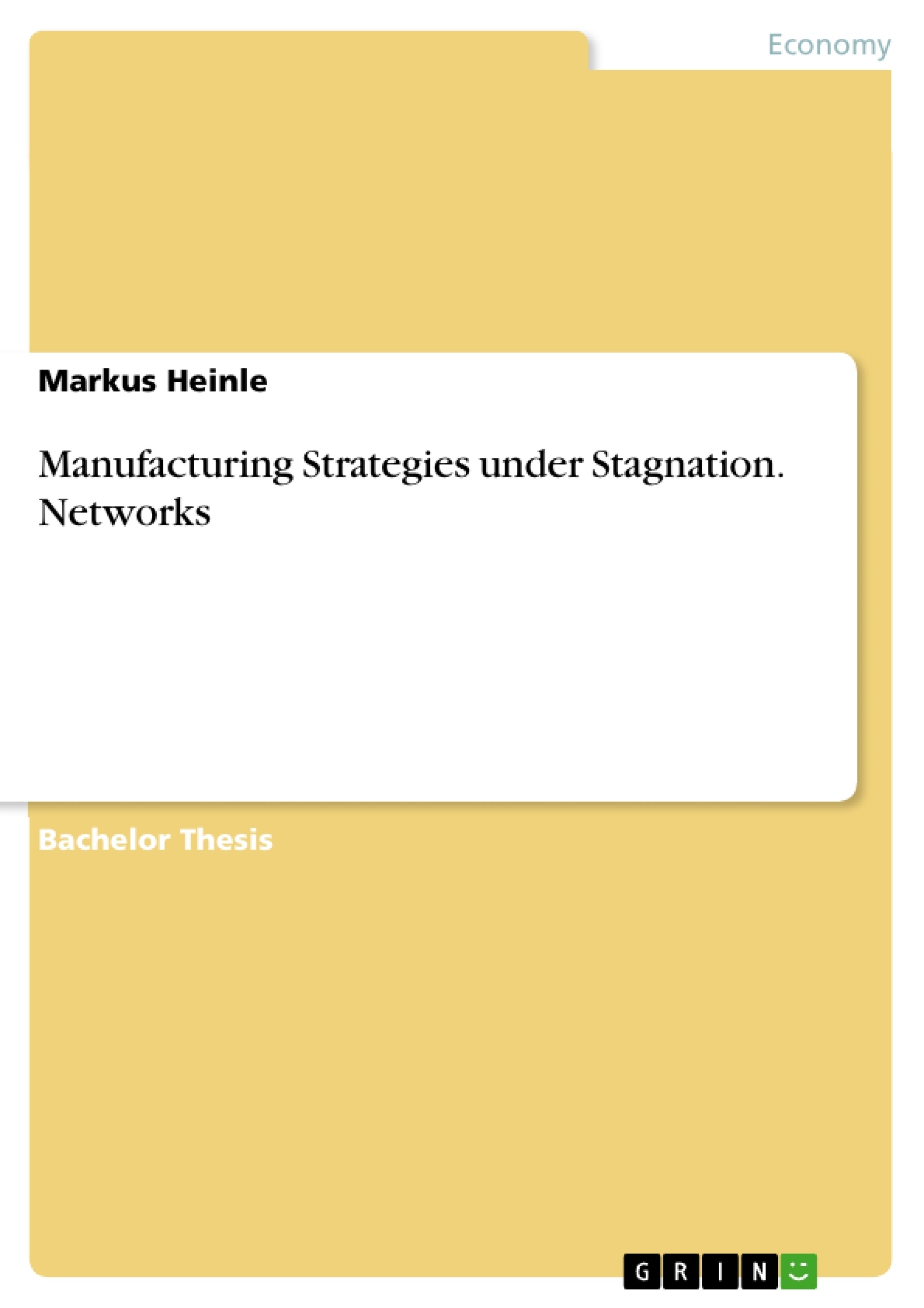While researching for literature on stagnation and operations strategy, not one source could be identified that links both subjects. In fact, literature on operations strategy generally seems to lack more concrete implications for turbulent situations. Therefore, this work addresses this gap and suggests that literature on strategies for stagnation needs to be extended by a network perspective. Concretely, the question, how a firm should configure its supply network depending on varying causes and consequences of stagnation will be answered.
Even though most of the literature dealing with the topic of stagnation originates from the 70s and 80s of the last century, stagnant industries are still a phenomenon to-day. In the meantime, since the literature has generated the strategies, the concept of “outsourcing” has become popular across many firms. The content of this idea is basically dealing with the question whether a firm should make certain components or products by itself or buy them from external suppliers and by that outsource a part of an operation. This decision determines a firm’s boundaries to other firms and also effectively determines its vertical integration. Having decided not to produce certain goods by itself, a firm must also determine the number of suppliers it wants to buy from and the relationships towards these. Extending this mention by the customer-side of a firm leads to the perspective of the “supply network”. Decisions that change the structure of this network will have significant effects on an operation’s performance in terms of quality, speed, dependability, flexibility and cost. Thus, Slack and Lewis hold that nowadays, it’s not single operations that compete, but whole networks.
Inhaltsverzeichnis (Table of Contents)
- 1. Introduction
- 2. Conceptual Framework
- 2.1 Operations Strategy
- 2.2 Networks
- 2.3 Stagnation
- 3. Literature Review on Stagnation
- 3.1 Methodology
- 3.2 Findings
- 3.2.1 Causes and Consequences of Stagnation
- 3.2.2 Strategies for Competition under Stagnation
- 4. The Supply Network's Environment
- 5. Strategic Implications for Networks
- 5.1 Cost Leadership
- 5.2 Differentiation
- 5.2.1 Product Quality
- 5.2.2 Delivery Performance
- 5.3 Responsiveness
- 5.4 Innovativeness
- 5.5 Volume Flexibility
- 5.6 Discussion
- 6. Implications for Theory and Practice
- 6.1 Implications for Theory
- 6.2 Implications for Practice
- 7. Conclusion
Zielsetzung und Themenschwerpunkte (Objectives and Key Themes)
This thesis examines the strategic challenges and opportunities that companies face in a stagnating market environment. It analyzes how networks can be effectively managed to achieve competitive advantage under such conditions.
- Operations strategy in stagnating markets
- Network management and strategic implications
- Competitive advantages through cost leadership, differentiation, responsiveness, innovativeness, and volume flexibility
- Theoretical and practical implications for businesses operating in stagnating markets
Zusammenfassung der Kapitel (Chapter Summaries)
The first chapter provides a general introduction to the topic of manufacturing strategies in stagnating markets. Chapter two lays out the conceptual framework, defining key terms like operations strategy, networks, and stagnation. Chapter three reviews the existing literature on stagnation, focusing on its causes, consequences, and strategic responses. Chapter four delves into the environment of supply networks and examines its impact on strategic decisions. Chapter five examines the strategic implications for networks, analyzing different competitive strategies like cost leadership and differentiation in detail. Finally, chapter six explores the implications of the research for both theory and practice, providing practical recommendations for companies.
Schlüsselwörter (Keywords)
The primary focus of this work lies in the intersection of operations strategy, networks, and market stagnation. Key concepts include cost leadership, differentiation, responsiveness, innovativeness, and volume flexibility as strategic levers for competition within networks in a stagnating environment.
- Quote paper
- Markus Heinle (Author), 2018, Manufacturing Strategies under Stagnation. Networks, Munich, GRIN Verlag, https://www.grin.com/document/451779



